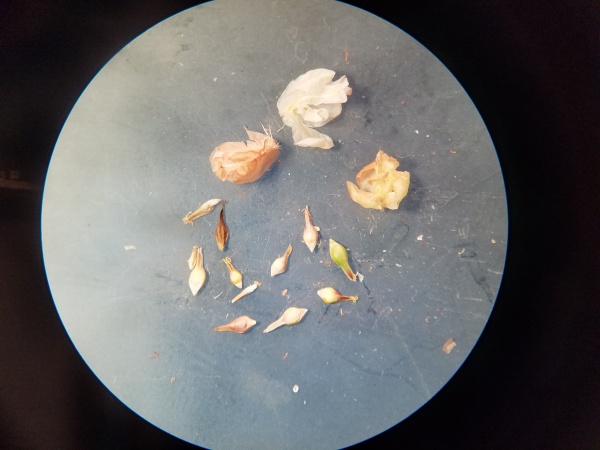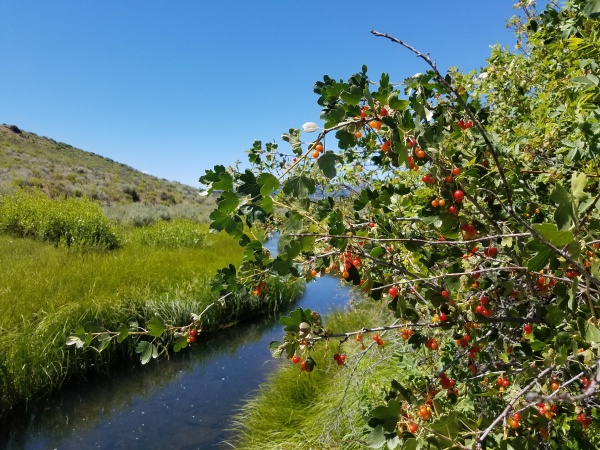Last year we didn’t manage to get out into the field to make seed collections until the second of week of July. Prior to that, we had the arduous task of applying for seed collection permits with the 75+ sites we intended to visit for SOS East. The application process was similar for most – they took forever to be approved.
This year, however, all of our permits were already in place for us. Most of them carried over from last year, some had to be renewed, and some were new. I took care of renewing and applying for new permits while I was waiting for this year’s internship to start. That allowed us to hit the ground running after our training here at the North Carolina Botanical Garden at the start of June.
Now, anyone that has any gardening or seed collecting experience can tell you that if you miss a collection time for any of your early summer fruits (the ones birds tend to really enjoy), you might as well hang up your hat and wait until next year. Maybe then you can be the early bird that gets the [fruit]. Anyway, that’s how last year started for us. We completely missed all but one Vaccinium collection in the whole of our range, as well as many of our other enticing fruit collections and early bloomers. Here’s the Vaccinium we were able to collect both last year and this year

Vaccinium fuscatum
So far we have been able to collect 9 species that we missed last year! A few were only just collected this year because we hadn’t found (or overlooked) populations large enough. Others were simply eaten or otherwise dispersed before we could collect them.
Our first was Acer rubrum (Red maple), whose natural period of dispersal is purported to end by July. My mentor, Amanda Faucette, and I took a trip in mid-April to the NC coast and made a collection at that time, after seeing that most Red maples had already disseminated their samaras.
Next we collected Salix nigra (Black willow), which, as with Acer rubrum, does it’s thing early in the year. We didn’t expect to make a collection at all, but we happened upon a fantastic population serendipitously.
We managed collections of Gaillardia pulchella and Rubus pensilvanicus shortly thereafter, and moved on to Viburnum dentatum, Sambucus canadensis, and Schoenoplectus tabernaemontani.

Rubus pensilvanicus

Viburnum dentatum

Sambucus canadensis (Sambucus nigra ssp. canadensis)

Schoenoplectus tabernaemontani
Our most recent collections were Danthonia spicata and Deschampsia flexuosa, which we were astonished to find in large enough populations, especially this late in the season.
One interesting plant I keep seeing time and time again is Platanthera lacera (Green fringed orchid). I hadn’t ever seen it before. I first noticed it at Smallwood State Park in Maryland about 3 weeks ago. Since then I’ve seen it a couple more times. Here’s what it looks like

Platanthera lacera
And just in case anyone is under the impression that seed collecting is all sunshine and rainbows, here’s a photo of our crew right after we collected many thousands of Eleocharis fallax spikes at Eastern Neck National Wildlife Refuge in the rain

We don’t look too bad after a torrential downpour!
But all joking aside, even in the rain when our boots are filling with water, our vests start stinking to high heaven, and we have trouble filling our seed collection bags, this is the most fun job I’ve ever had! I’ll let the others make their own judgements, but I’m sure they feel the same way.
Till next time.
Jake, North Carolina Botanical Garden, SOS East













































